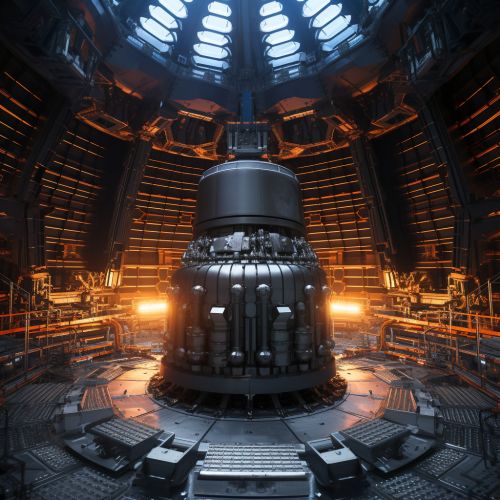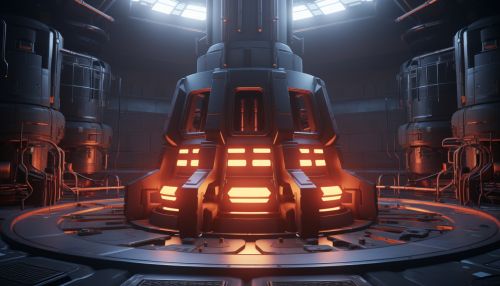Nuclear Fission Reactor
Introduction
A Nuclear Fission Reactor is a system that uses nuclear fission to generate heat, which is typically used to produce steam that drives a steam turbine connected to a generator which produces electricity. Nuclear fission is a nuclear reaction in which the nucleus of an atom splits into smaller parts, releasing a large amount of energy in the process.
Principles of Operation
A nuclear fission reactor operates on the principle of nuclear fission, where a heavy atomic nucleus, such as uranium-235 or plutonium-239, is split into two or more smaller nuclei along with the release of a large amount of energy. This energy is used to heat a working fluid, such as water or gas, which is then used to generate electricity.


Types of Nuclear Fission Reactors
There are several types of nuclear fission reactors, each with its own unique characteristics and applications.
Pressurized Water Reactors (PWR)
Pressurized Water Reactors (PWR) are the most common type of nuclear reactor, accounting for over 60% of all nuclear reactors worldwide. In a PWR, the nuclear fuel is enclosed in fuel rods, and the heat generated by nuclear fission is transferred to water under high pressure, which prevents the water from boiling.
Boiling Water Reactors (BWR)
In Boiling Water Reactors (BWR), the water in the reactor core is allowed to boil, creating steam that is directly used to drive the turbine generator.
Heavy Water Reactors (HWR)
Heavy Water Reactors (HWR) use heavy water, or deuterium oxide, as a neutron moderator. This type of reactor is commonly used in Canada, where it is known as the CANDU reactor.
Fast Breeder Reactors (FBR)
Fast Breeder Reactors (FBR) are designed to create more fissile material than they consume, effectively "breeding" fuel for future use.
Safety and Regulation
The operation of nuclear fission reactors is subject to strict safety regulations due to the potential risks associated with the release of radioactive materials. These regulations cover a wide range of aspects, from the design and construction of the reactor to its operation and decommissioning. In addition, international treaties and agreements, such as the Treaty on the Non-Proliferation of Nuclear Weapons, also play a role in the regulation of nuclear fission reactors.
Environmental Impact
While nuclear fission reactors do not emit greenhouse gases during operation, the mining and enrichment of uranium, the construction and decommissioning of the reactor, and the management of radioactive waste all have environmental impacts. These impacts need to be carefully managed to ensure the sustainability of nuclear power.
Future of Nuclear Fission Reactors
The future of nuclear fission reactors is a topic of ongoing debate. While some see nuclear power as a necessary part of a low-carbon future, others argue that the risks and costs associated with nuclear power make it an unattractive option. Advances in reactor design, such as Small Modular Reactors (SMR) and Generation IV reactors, may change this equation in the future.
